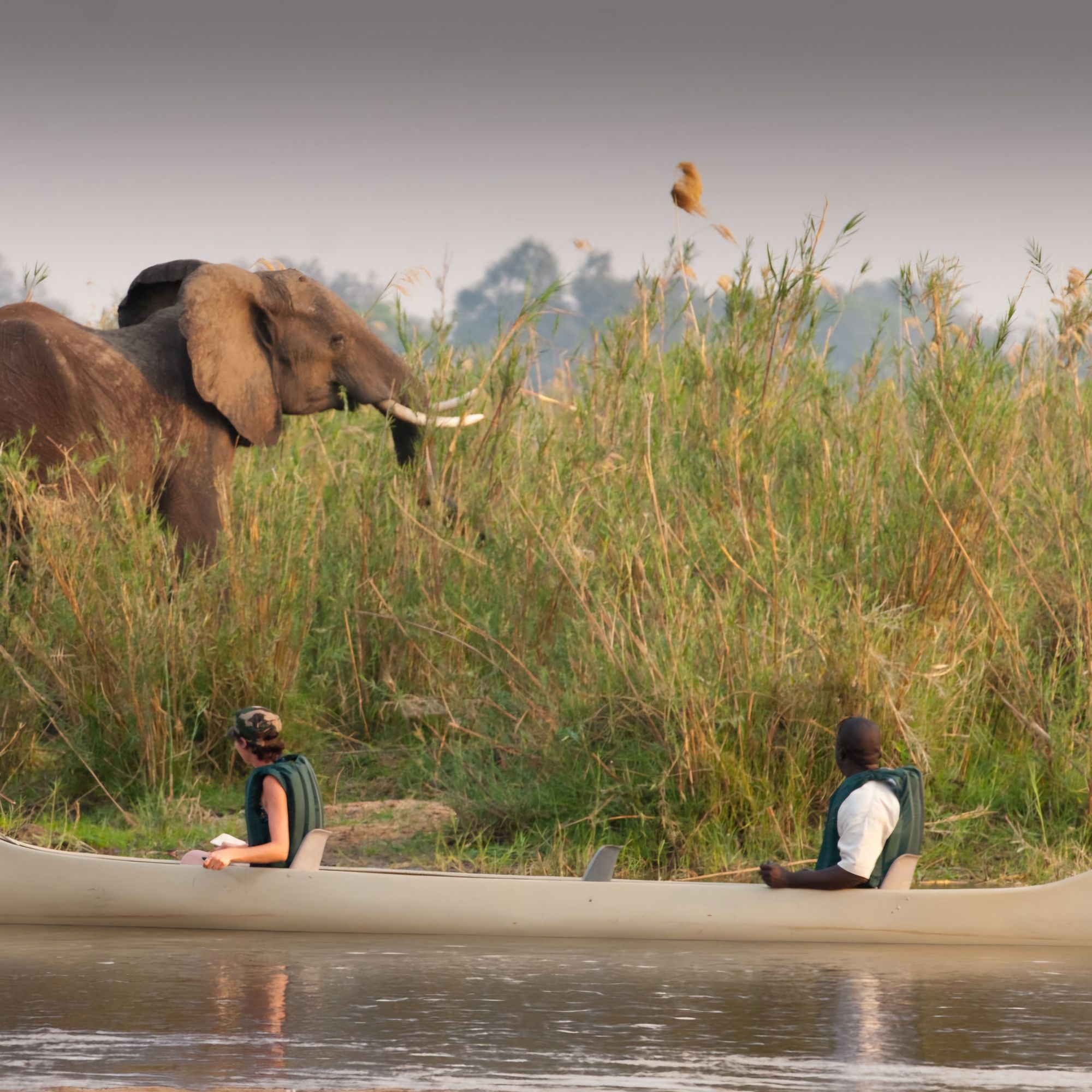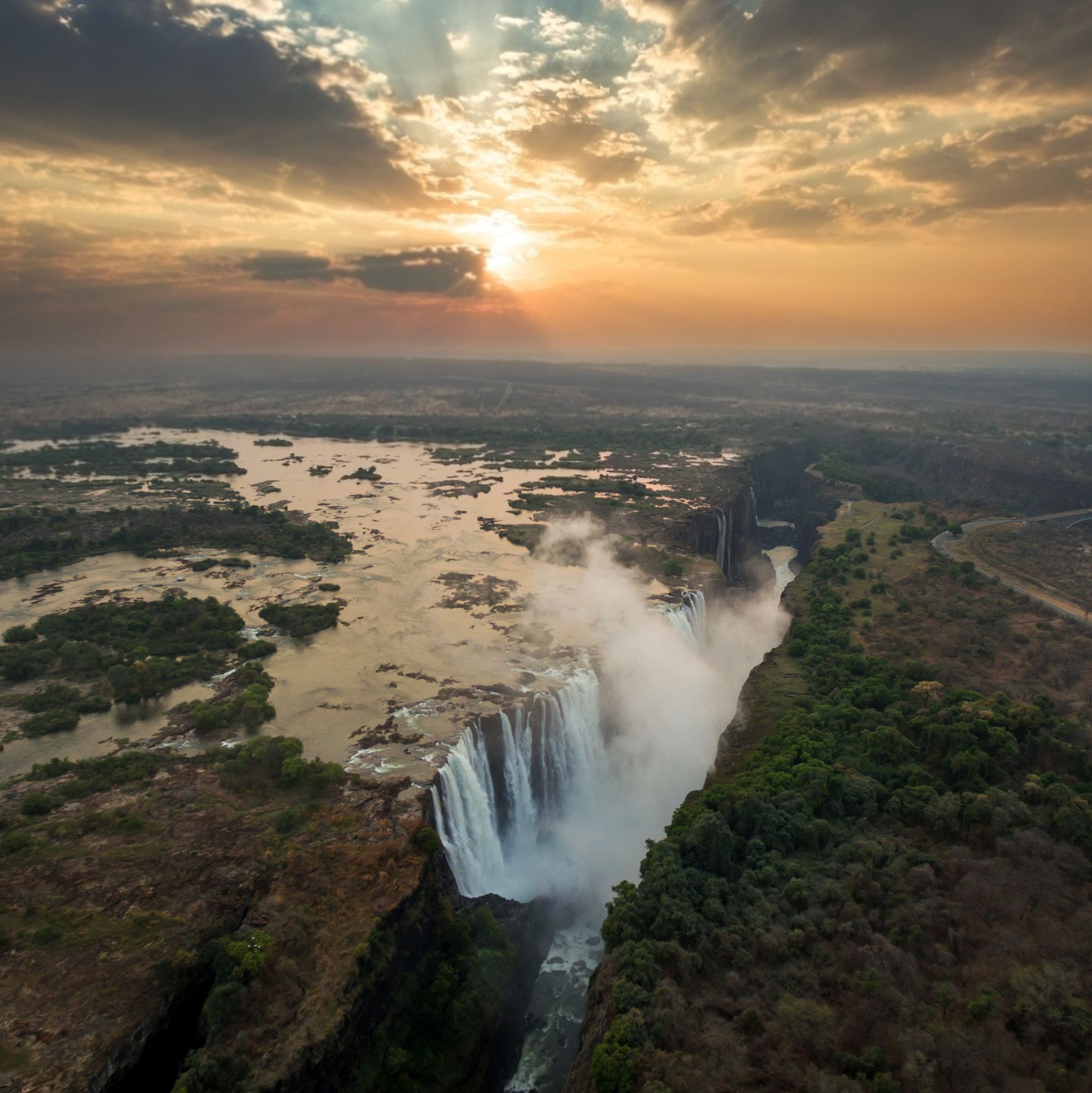Zambia, one of Africa’s best-kept secrets, is a safari lover’s paradise. With its vast wilderness, stunning landscapes and rich biodiversity, Zambia offers some of the most authentic safari experiences on the continent. Home to 20 national parks and 36 game management areas, this country provides numerous opportunities to witness the Big 5 and beyond in their natural habitat. Whether you’re an experienced safari-goer or a first-time visitor, you’ll find nearly everything you need to know here to make the most of your safari adventure in Zambia.
When to go
Dry Season (May to October): These months are ideal for game viewing as animals gather around water sources. The weather is cooler and vegetation is less dense, making wildlife easier to spot. This is also the best time for walking safaris in South Luangwa and Lower Zambezi National Parks.
Wet Season (November to April): The wet season is perfect for birdwatching and lush landscapes. The rain transforms Zambia into a green paradise, with migratory birds arriving and newborn animals dotting the plains. Victoria Falls is most impressive during the rainy season, with the highest water flow typically between February and May.
Where to visit in Zambia
South Luangwa National Park
South Luangwa National Park is renowned as the birthplace of the walking safari, a unique experience that allows visitors to explore the bush on foot with knowledgeable guides. This park is particularly famous for its high density of leopards, which are often spotted lounging in trees or prowling through the bush, giving the area the name Valley of the Leopard. Along the Luangwa River, visitors can observe large pods of hippos and sunbathing crocodiles, as well as plenty of elephant herds that drink from the water. The park’s diverse habitat supports a wide variety of wildlife and is renowned for world-class bird watching. South Luangwa offers a rich safari experience with its intimate bush walks and excellent game viewing opportunities.
What can you spot?
Visitors to South Luangwa National Park can see the rare Thornicroft’s giraffe, which is unique to this region of Zambia. These giraffes have distinctive patterns, with irregular star-shaped patches that are lighter in the center, setting them apart from other giraffe subspecies. Often seen browsing in the park’s woodlands, Thornicroft’s giraffes are adapted to the vegetation of the region, feeding on a variety of leaves, flowers, and fruits.
Where to stay:
Chikunto Safari Lodge, South Luangwa National Park
Chikunto Safari Lodge features five tented suites, each elevated for optimal views of the landscape. Guests can indulge in the central lodge’s bar and lounge or relax by the saltwater swimming pool. The lodge offers a fire pit area perfect for evening gatherings and a waterhole that attracts wildlife, providing great game viewing. High-speed broadband ensures guests stay connected, while the secluded setting immerses them in the wilderness. Personalized service, gourmet dining and expertly guided safari activities make Chikunto Safari Lodge an ideal location in South Luangwa National Park.
HOW: Chikunto Safari Lodge is priced from US$594 per person, per night. This rate includes accommodation, meals and local beverages, roundtrip transfers from Mfuwe Airport, two game viewing activities per day, walking safaris, cultural/village tour or visit to the local market and laundry. For more information and to book, please visit: www.chikunto.com
Lower Zambezi National Park
Located along the Zambezi River, Lower Zambezi National Park is celebrated for its scenic beauty and wildlife encounters. The park is a prime destination for canoe safaris, providing a tranquil and immersive way to observe elephants, hippos, and crocodiles from their natural habitat. Lower Zambezi offers a range of activities beyond safaris, including fishing, boat cruises, and guided walking tours, making it a great destination for nature enthusiasts.
What can you spot?
Lower Zambezi National Park is renowned for sightings of the African wild dog, one of Africa’s most endangered carnivores. Known for their large, rounded ears and mottled coats of black, brown, white, and yellow, these social predators are distinguished by their striking coat patterns and pack behavior. Wild dogs are highly social animals, living and hunting in packs that work together to chase down prey over long distances. Observing their cooperative hunting strategies and complex social interactions is a highlight for visitors to the park.
Where to stay:
Sausage Tree Camp, Lower Zambezi National Park
Nestled in Zambia’s Lower Zambezi National Park Sausage Tree Camp features eight spacious safari tents, each with a king-size bed, semi-open-air bathroom, dining area, private pool and expansive deck. The exclusive Kigelia House offers a two-bedroom option ideal for families or groups. Each tent comes with a dedicated butler, ensuring personalized service. Guests can enjoy gourmet dining, a central bar and dining area, a large teak deck and a shaded swimming pool, all overlooking the Zambezi River.
HOW: Sausage Tree Camp is priced from US$1,322 per person, per night. This rate includes morning and evening game drives, morning and evening boating safaris, walking safaris (when available), a selection of out-of-camp picnics/meals, plus Zambezi River tiger fishing. For more information and to book, please visit: www.greensafaris.com
Kafue National Park
As Zambia’s largest national park, Kafue offers vast expanses of unspoiled wilderness and diverse ecosystems, including miombo woodlands, open grassy plains and riverine forests.
Kafue is known for its predator sightings, including cheetahs, wild dogs, and leopards. Kafue’s remote location and expansive terrain ensure a sense of solitude and adventure, with activities ranging from game drives and guided walks to night safaris that reveal the park’s nocturnal inhabitants.
What can you spot?
In Kafue National Park, visitors can spot the elusive cheetah, which is relatively rare in Zambia. Known as the fastest land animal, cheetahs are built for speed with their slender bodies, long legs, and distinctive black tear marks running from the inner corners of their eyes down to the sides of their mouths. Kafue’s vast open plains provide the perfect habitat for these fast predators, offering visitors a chance to see them in action as they sprint after antelope and other prey.
Where to stay:
Ila Safari Lodge, Kafue National Park
Ila Safari Lodge stands as a serene sanctuary within Kafue National Park, offering an authentic African safari experience enriched with luxury and sustainability. Situated along the banks of the Kafue River, the lodge boasts ten beautifully appointed safari tents, each blending into its natural environment. Families and groups can also retreat to two spacious suites, offering private spaces. Embracing a commitment to sustainability, Ila Safari Lodge incorporates environmentally friendly building materials, operates on solar-powered electricity and pioneers innovative initiatives such as Zambia’s first electric game drive vehicle.
HOW: Ila Safari Lodge is priced from US$594 per person, per night. This rate includes morning and evening game drives, morning and evening boating safaris, walking safaris (when available) and a selection of out-of-camp picnics/meals – massages and a floating spa are available at an extra cost. For more information and to book, please visit: www.greensafaris.com
Victoria Falls, Livingstone
Victoria Falls, one of the Seven Natural Wonders of the World and a UNESCO World Heritage Site, draws visitors with its beauty and adventurous activities. The falls, spanning almost half a mile wide, cascade into the Zambezi gorge with tremendous force, creating a misty fog visible from miles away, giving the nearby Mosi-oa-Tunya National Park its name. Beyond admiring the falls from various viewpoints, visitors can engage in adrenaline-pumping adventures such as bungee jumping, white-water rafting, and scenic helicopter flights over the falls. Cultural experiences are also available nearby, including visits to local villages and markets, offering a well-rounded exploration of Zambia’s culture and natural heritage.
What can you spot?
In the Mosi-oa-Tunya National Park near Livingstone, visitors have the opportunity to see the endangered white rhinoceros. Distinguished by their broad, flat mouths adapted for grazing on grass, white rhinos are the larger of the two rhino species found in Africa. They have two horns on their snouts, with the front horn being more prominent. These animals are closely monitored and protected within the park, making it one of the few places in Zambia where visitors can see them.
Where to stay:
Royal Chundu, Livingstone
Consisting of two intimate lodges, Island Lodge and River Lodge, Royal Chundu offers an exclusive retreat. The lodges are elegantly designed, with spacious suites that blend African chic with modern comforts. Activities at Royal Chundu are tailored to provide a holistic safari experience, including guided river safaris to explore the Zambezi’s wildlife and surroundings. Guests can also unwind with spa treatments overlooking the river or indulge in gourmet meals featuring fresh, locally sourced ingredients.
HOW: Royal Chundu is priced from US$1,188 per person, per night. This rate includes accommodation, all meals, tea, coffee, soft and house alcoholic drinks (excluding premium brands), roundtrip road transfers from Livingstone International Airport, daily sunset experience and activities such as river cruises, birding safaris, fishing, canoeing, walking tour of Victoria Falls with return transfers and a cultural tour. For more information and to book, please visit: www.royalchundu.com
Liuwa Plain National Park
Nestled in the remote western region of Zambia, Liuwa Plain National Park is characterized by its plains and seasonal flooding. The park is known for hosting Africa’s second-largest wildebeest migration, a spectacle that attracts nature enthusiasts seeking to witness tens of thousands of wildebeest in motion. The park’s remote location ensures a peaceful and unspoiled environment, ideal for photography safaris, guided game drives, and cultural encounters with the local Lozi people, who have lived harmoniously with the wildlife for centuries.
What can you spot?
Liuwa Plain National Park is home to the rare blue wildebeest. Known for their annual migration, these wildebeests have a distinctive appearance with their slate-blue coats, dark vertical stripes, and a sturdy build. They can be seen in large numbers, especially during the rainy season when they move across the plains in search of fresh grazing.
Where to stay:
Liuwa Camp, Liuwa Plain National Park
Having opened in December 2023, Liuwa Camp is a fully catered lodge featuring eight ensuite canvas chalets, including a family unit with two separate chalets, designed to accommodate up to 18 guests. Each chalet is strategically placed on a raised deck to ensure privacy and offer panoramic views of the plains and the waterhole. The central area is a vibrant display of Lozi culture, comprising an airy dining room, a spacious lounge and a library, all housed under a canvas roof. Guests can partake in game drives during the day or explore on foot with a renowned Zambian walking safari. Remember to bring a camera and binoculars, as the landscapes and wildlife are spectacular. End the night relaxing around the firepit, enjoying the stunning night skies of Liuwa.
HOW: Liuwa Camp is priced from US$534 per person, per night. For more information and to book, please visit: www.liuwacamp.com










